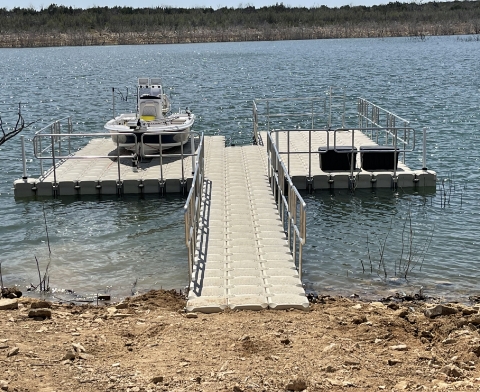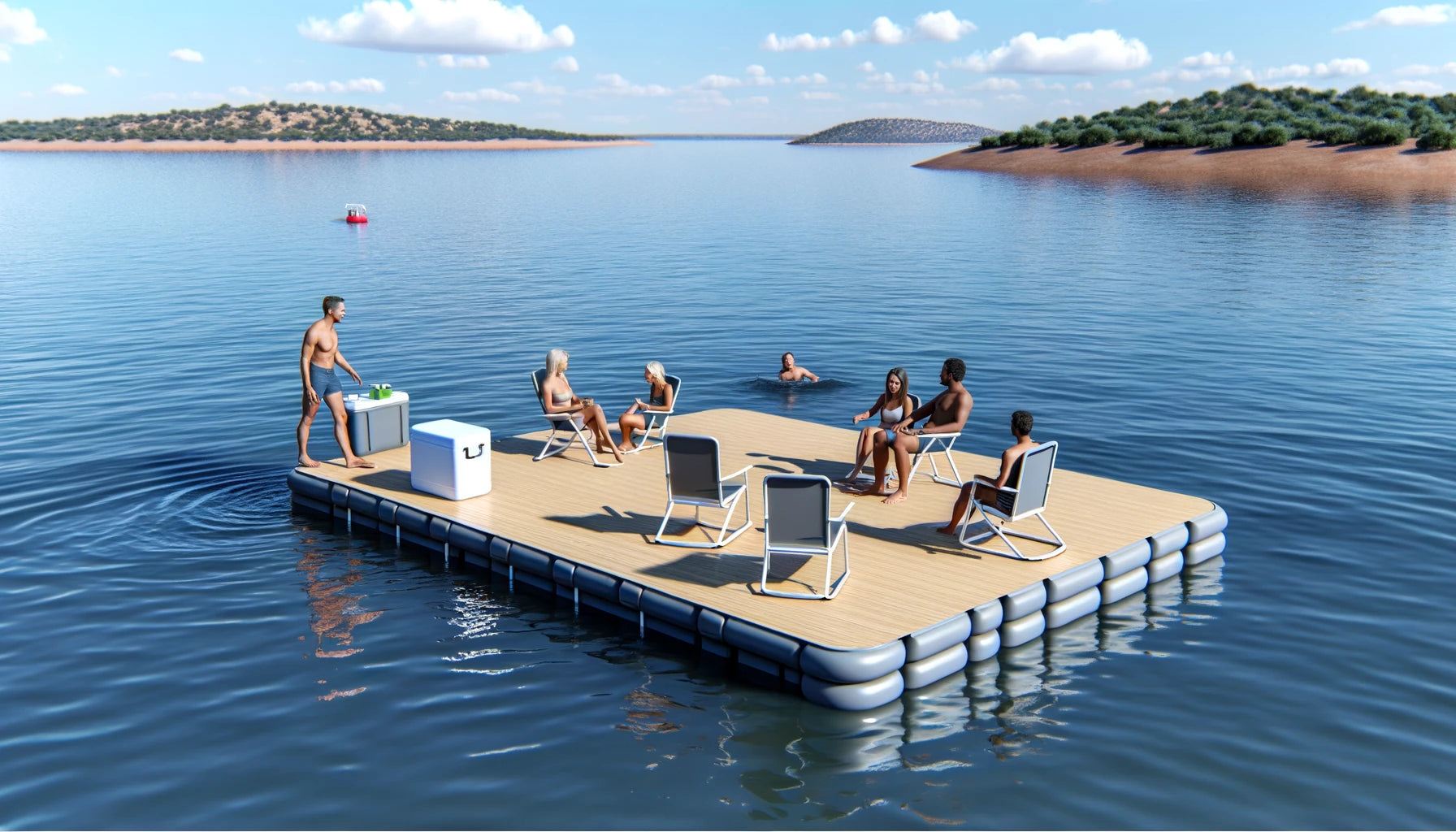Crafting Custom Solutions: Why a Floating Dock Builder is Necessary for Distinct Needs
Crafting Custom Solutions: Why a Floating Dock Builder is Necessary for Distinct Needs
Blog Article
Produce the Perfect Docking Option With Floating Docks
Floating docks existing a functional solution for a range of maritime requirements, adjusting perfectly to rising and fall water levels and varied vessel types. As we discover the crucial components that contribute to the performance of floating docks, a number of key factors relating to security and upkeep will certainly arise, raising concerns concerning just how to enhance your docking experience.

Benefits of Floating Docks
Floating docks offer numerous advantages that make them an excellent choice for numerous maritime applications. Among the main advantages is their versatility to altering water levels. Unlike repaired docks, floating docks fluctuate with the trend, making certain constant availability for vessels. This attribute is specifically crucial in areas susceptible to considerable tidal variations or seasonal water level changes.
In addition, floating docks are generally much easier and quicker to set up compared to typical set frameworks. Their modular design enables uncomplicated assembly and disassembly, assisting in upkeep and moving when required. This adaptability is particularly valuable for temporary applications or in environments where problems might change.
Floating docks also have a tendency to be more eco-friendly, as they reduce interruption to the seabed and surrounding aquatic ecosystems. Their resilient nature decreases the risk of damages to marine life, advertising a healthier environment. Additionally, these docks can be customized to fit various vessel sizes, ensuring that they satisfy particular operational requirements - floating dock company.
Inevitably, the combination of versatility, convenience of installation, and ecological considerations makes floating docks a very effective remedy for a wide range of maritime needs.
Picking the Right Materials
Picking the suitable materials for floating docks is important to make certain stability, longevity, and resilience. The choice of products straight affects the dock's efficiency in different environmental conditions, consisting of exposure to water, sunlight, and possible wear from marine traffic.
Typical materials used for floating docks include light weight aluminum, wood, and high-density polyethylene (HDPE) Light weight aluminum is light-weight, corrosion-resistant, and calls for marginal maintenance, making it an excellent option for long life. Nevertheless, its first expense can be greater compared to other materials.
Wood, while visually appealing and giving a traditional appearance, can be at risk to rot and insect damage if not appropriately dealt with. Utilizing pressure-treated timber or normally resilient varieties like cedar or redwood can mitigate these issues.
HDPE is a prominent choice because of its resistance to UV rays and chemicals, along with being eco-friendly. floating dock company. It is offered and lightweight in various colors, permitting personalization
Eventually, the ideal product selection will depend upon certain needs, including budget plan, preferred visual appeals, and ecological factors to consider. Cautious examination of these variables will certainly result in a successful and durable floating dock option.
Style Considerations for Security
When developing floating docks, making sure stability is a basic element that can dramatically impact their capability and security. Security in floating dock layout is affected by useful source numerous aspects, including buoyancy, weight circulation, and the setup of components. An optimal buoyancy system ought to use products that supply enough lift while reducing weight. This balance makes certain that the dock remains above water, also under differing tons.
Weight circulation is important; equally distributing lots throughout the dock protects against turning and improves security. This can be attained with tactical placement of docking equipment, such as cleats and fenders, in addition to correct spacing of floats. Furthermore, the measurements of the dock need to be thoughtfully prepared. Bigger designs can use boosted security, specifically in harsh water conditions, while longer docks might require added assistances to stop sagging.
Another key factor to consider is the ecological impact, consisting of wave activity and wind. Incorporating functions such as sidewalls or skirting can assist reduce the results of environmental pressures, preserving stability in damaging conditions. Ultimately, a combination of thoughtful layout, material option, and understanding of environmental variables will generate a floating dock that fulfills both stability and security requirements.
Setup Tips and Techniques

Next, secure the needed authorizations and comply with regional regulations, which might determine installment methods and environmental considerations. Engage a certified service provider experienced in floating dock installments if called for. Usage high-quality products made for marine environments to enhance toughness and long life.
When placing the dock, align it alongside the shoreline to promote easy access. Guarantee that the anchoring system click over here now is durable, using cinder block or helical supports to maintain the dock against wind and wave activity. It's vital to account for seasonal water level changes, including possible ice activity in cooler climates.
Throughout the installment, confirm the dock's floatation and stability prior to completing the anchoring. Routinely check the installation for any indications of wear or damage. By following these techniques and suggestions, you can achieve a safe and secure, practical, and aesthetically pleasing floating dock setup that fulfills your needs.
Maintenance and Care Standards
Caring and preserving for floating docks is critical to prolonging their lifespan and guaranteeing risk-free use. Routine assessments must be performed to identify any kind of signs of wear, damage, or marine growth. Look for cracks, loose installations, or stained areas on the dock's surface, as these problems can jeopardize architectural honesty.
Cleansing is essential. Utilize a pressure washer to eliminate algae, barnacles, and particles, which can accumulate over time. For stubborn growth, take into consideration eco-friendly cleaning representatives that will not hurt water life.
In addition, examine the mooring lines and supports regularly to guarantee they are safe and secure and free from deterioration. Replace any type of torn or harmed lines without delay to keep stability.
During severe climate, such as tornados or freezing problems, take precautionary steps. Protect the dock with additional mooring lines and, if feasible, remove any kind of detachable elements to avoid damages.
Conclusion
In conclusion, the application of floating docks offers a versatile and reliable docking service ideal for various maritime applications. With proper setup and regular upkeep, floating docks can give reliable and reliable docking experiences for a large range of vessels.
As we check out the crucial components that add to the performance of floating docks, a number of key aspects regarding security and maintenance will certainly arise, elevating inquiries about exactly how to enhance your docking experience. Unlike dealt with docks, floating docks rise and autumn with the trend, ensuring regular accessibility for vessels.When designing floating docks, guaranteeing security is an essential element that can considerably influence their capability and security. Stability in floating best site dock design is influenced by various elements, consisting of buoyancy, weight circulation, and the setup of components. Eventually, a combination of thoughtful design, material option, and understanding of ecological variables will certainly yield a drifting dock that satisfies both stability and safety and security demands.
Report this page